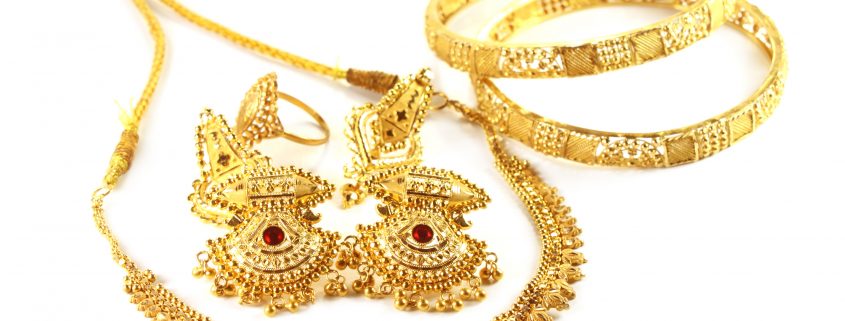When it comes to buying or selling gold, knowing where to do it can make all the difference. Should you visit a pawn shop or a gold and silver exchange? Both offer unique advantages but cater to very different audiences, making it essential to determine which suits your needs best.
This guide will provide clarity, breaking down the distinctions between pawn shops and gold and silver exchanges. By the end of this post, you’ll know the benefits of each, how they differ, and why specialized stores—like California Gold & Silver Exchange—are often the best place for serious investors and collectors.
What is a Pawn Shop?
Pawn shops have been around for centuries, offering individuals a convenient way to borrow money quickly or sell items of value for cash. They work as middlemen, dealing with a wide variety of goods, including jewelry, electronics, antiques, and—as relevant here—gold.
When it comes to gold, pawn shops operate in two capacities:
- Buying Gold: Pawn shops purchase gold items (such as coins, bullion, or jewelry) from sellers, often for less than market value.
- Selling Gold: Gold items purchased or forfeited by borrowers are resold, typically at a markup, to generate profit.
While pawn shops serve an important purpose for those needing immediate liquidity, they’re not always the best place for transactions involving investment-grade gold and silver. Their appraisal may lack precision, and the buying or selling process often lacks the transparency many investors or collectors value.
Pros of Pawn Shops
- Convenience: Often located in neighborhoods, pawn shops are accessible and easy to visit.
- Quick Cash: Selling gold here is an almost instant process, so it’s ideal in emergencies.
- No Expertise Needed: For those unfamiliar with the gold market, pawn shops provide a simple way to sell or purchase items.
Cons of Pawn Shops
- Lower Value for Gold: Pawn shops typically offer prices far below market value, as their primary interest lies in reselling for profit.
- Limited Expertise in Precious Metals: Pawn brokers deal with a wide range of items, which often means they lack in-depth knowledge of gold and silver.
- Inventory May Be Unreliable: Gold items for sale may lack documentation or sufficient quality assurance.
Next, let’s explore an alternative that’s more tailored and reliable for those seeking investment-grade transactions.
What Is a Gold and Silver Exchange?
A gold and silver exchange is a specialized business that primarily deals in precious metals, including gold coins, bullion, and silver bars. These establishments cater specifically to investors, collectors, and individuals who want to liquidate gold or silver holdings for fair market value.
Unlike pawn shops, exchanges often employ experts who can accurately evaluate the value of gold and silver based on its weight, purity, and current market prices. This makes it an ideal option for serious investors looking for transparency and professionalism.
Services Offered by Gold & Silver Exchanges:
1. Buying Gold & Silver:
- Investors or collectors can browse curated inventories of gold bullion, coins, and silver bars.
- Items are sourced with transparency and often come with essential documentation to ensure authenticity.
2. Selling Gold & Silver:
- Sellers receive detailed evaluations of their coins, bullion, or jewelry based on market conditions, ensuring fair compensation.
3. Precious Metal Trading:
- Exchanges provide buy/sell spreads for physical metals that mimic the stock exchange. For larger investors wanting to manage physical assets, this is an excellent tool.
Pros of Gold & Silver Exchanges
- Expertise: The exchange employs professionals who understand the nuances of market trends, allowing for accurate valuations.
- Fair Market Pricing: You’re more likely to get a fair price for your items when selling or the best market price when buying.
- Quality Control: Items sold at the exchange are verified for authenticity and purity, providing customers with peace of mind.
- Community Access: Exchanges often offer resources, events, or memberships for gold and silver enthusiasts.
Cons of Gold & Silver Exchanges
- Specialization May Feel Intimidating: For those without prior knowledge of the precious metals market, stepping into an exchange may seem overwhelming at first.
- More Formal Process: Unlike pawn shops, the buying or selling process may require additional time due to comprehensive appraisals.
Gold and silver exchanges provide a highly targeted, professional environment that meets the needs of investors and collectors. Now, let’s examine how they differ from pawn shops and why those differences matter.
What is the Difference Between a Pawn Shop and a Gold & Silver Exchange?
When deciding between a pawn shop or a gold and silver exchange, understanding their differences is crucial:
| Feature |
Pawn Shop |
Gold & Silver Exchange |
| Purpose |
Loans and reselling various goods |
Specializes in trading precious metals |
| Expertise |
General knowledge of many items |
Deep expertise in gold, silver, and market trends |
| Pricing Transparency |
Limited; often offers below market value |
Transparent with fair market-driven pricing |
| Inventory Assurance |
Limited documentation for items |
Verified and documented inventories |
| Target Audience |
Individuals needing quick cash |
Investors, collectors, and enthusiasts |
|
|
|
Ultimately, pawn shops are focused on quick transactions and convenience, while exchanges excel in precision, professionalism, and serving the needs of sophisticated buyers or sellers.
Why Choose California Gold & Silver Exchange?
If you’re serious about investing in precious metals or looking to get the best value when selling, a gold and silver exchange—like California Gold & Silver Exchange—is unparalleled in its offerings. Here’s why:
1. Unmatched Expertise
Our team consists of seasoned industry professionals who stay updated on trends in the global gold and silver markets. We don’t guess; we provide exact valuations.
2. Fair Pricing
Whether you’re buying or selling, transparency is the priority. Our evaluation process ensures that all transactions are based on the day’s fair market rates.
3. Quality Assurance Focus
Every product in our inventory, from bullion to rare coins, is verified for authenticity and purity. When you buy, you know exactly what you’re getting.
4. Community of Like-Minded Enthusiasts
California Gold & Silver Exchange is more than a business; we’re a hub for collectors, investors, and enthusiasts. Exclusive subscriber deals, investor newsletters, and networking opportunities are just some of the community benefits we offer.
5. Convenience That Doesn’t Compromise
With multiple locations and the ability to handle transactions both in-store and online, we make buying or selling precious metals easy while maintaining high standards of transparency and professionalism.
Your Gold Deserves Better—Make the Right Choice
While pawn shops may appeal to those in need of quick cash, gold and silver exchanges—like California Gold & Silver Exchange—are designed for individuals who appreciate the true value of precious metals. Whether you’re buying, selling, or simply exploring your options, choosing the right platform ensures you achieve the most from your assets.
Are you ready to make the best decision for yourself and your gold investments? Visit California Gold & Silver Exchange today for a consultation or explore our curated inventory. With expertise, transparency, and an unwavering commitment to quality, we’re here to help you every step of the way.






















